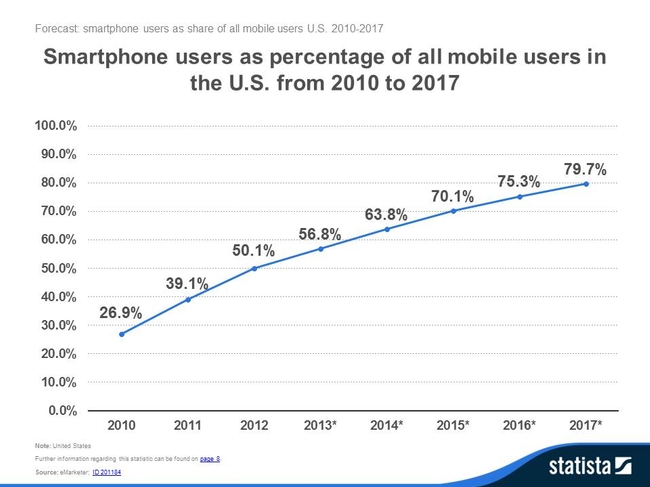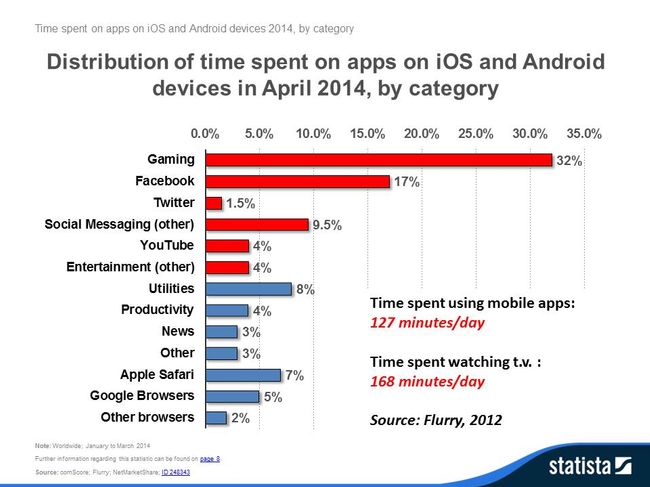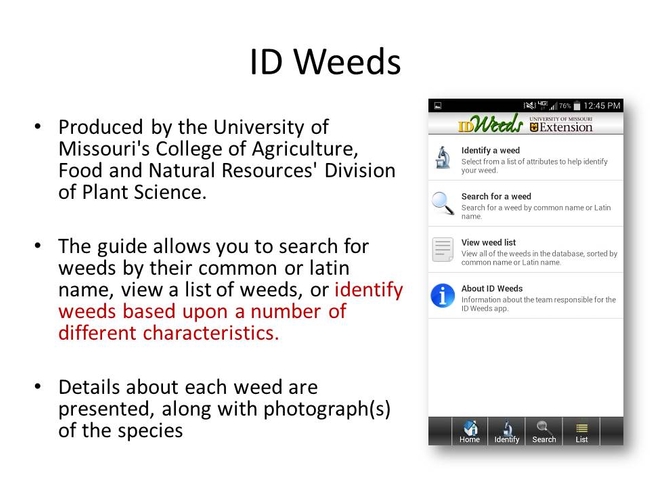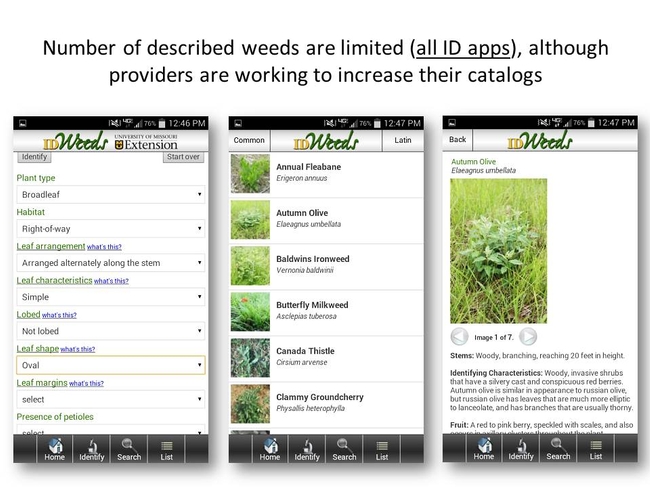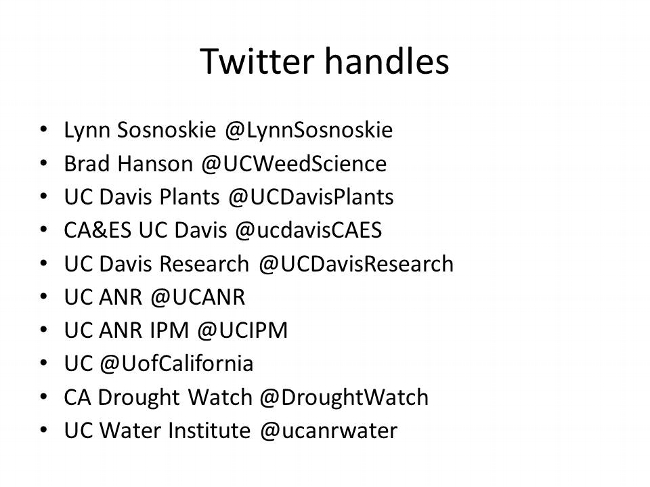This is a summary of a presentation that I made at the 2015 CWSS Annual Meeting in Santa Barbara, CA, last January.
Introduction:
We love our smart phones. REALLY LOVE THEM. Most of us have them (or will soon have them). We also spend a lot of time on them; more than two hours per day with the majority of that time spent using applications (apps).
Figure 1. Current and projected smart phone ownership in the United States. Data via www.statista.com
Figure 2. Distribution of time spent on smart phone apps by category. Data via www.statista.com
While the average citizen is primarily focused on apps that are designed for socializing, gaming, and other entertainment, there are applications that have been developed, specifically, to assist those involved in agricultural industries. Agricultural apps can be broken down into three main categories: 1) apps for receiving information (i.e. weather applications), 2) assessment tools and calculators (i.e. weed ID, sprayer calibration), 3) apps for information dissemination (i.e. social media).
Weather Applications:
There are lots and lots and lots of weather apps available for smart phones. Finding one that you like should be a relatively easy task. I do, however, want to make you aware of one that you might be unfamiliar with: Windfinder.
Figure 3. Several weather apps available for Android and iPhones.
Windfinder is an app that I use, extensively, especially when I am preparing to apply herbicides. Windfinder is a free to use weather service for kitesurfers, windsurfers, surfers, sailors, paragliders, etc. The service will provide you with real-time and predicted wind/weather forecasts for more than 30,000 locations worldwide using data from 17,000 weather stations. Personally, I love having the wind speed and direction front and center when i am deciding whether of not to spray.
Figure 4. Example of the Windfinder app display and accompanying weather data.
Assessment Tools and Calculators:
There are several tools out there that are designed to help with weed identification. My primary concerns are: 1) that they are more useful for identifying weeds more common to the South Central United States than California and 2) I am uncertain how quickly the information will be updated and weed species will be added. Still, I have used the ID Weeds app, which was created by the University of Missouri, to help confirm my suspicions about some weeds whose names had escaped my memory. What I really like about this app is the fact that you can compile a "list of suspects" by inputting a set characteristics/attributes that describe your unknown specimen.
Figures 5 and 6. Screen captures from the ID Weeds app demonstrating attribute selection and species selection.
The Trimble Connected Farm Scout app isn't a tool for identifying weeds; it is, however, a tool for mapping pest (including weeds) problems on the farm. This app uses your phone's built in GPS unit to map field boundaries and the location of insect pests, diseases, and weeds (you can also geo-reference images of said pests that you have taken using your phone's camera). The greatest utility of this app probably comes from the support of the Trimble Connected Farm system, which allows you to collect, share, and manage a suite of data developed using this and other apps (i.e. Connected Farm Irrigate, Connected Farm Fleet).
Figure 7. Screen capture and description of the utility of the Connected Farm App.
Sprayer calibration is essential for maximizing weed control and minimizing crop and off-target injury, and multiple apps have been developed to help with this process. I use the Calibrate My Sprayer app developed by Clemson University. It is plug and play: broadcast or banded, nozzle spacing, nozzle number, speed, spray volume, etc... and you are ready to go.
Figure 8. Screen captures from the Calibrate My Sprayer app.
Information Dissemination:
Information sharing should be a two-way street, and many farms and farmers have taken to social media (Twitter, Instagram, and Facebook) to share their knowledge and experiences. Industry and extension also have significant online presences. I like to use Twitter as an extension tool; I also use it as a means for keeping up with agricultural news and research from around the state, the country, and the world.
Figure 9. Twitter handles for a select group of UC institutions.
The apps listed in this blog are not the only ones available for agriculture, nor even the only ones available for the discipline of weed science. I chose to highlight these, specifically, as they are the programs that I use most frequently. Please see below for additional sources of smart-phone apps that could be of use to you. Have fun searching for your next smart-phone tool!
http://www.ssca.ca/index.php/smartphone-apps
http://aged.illinois.edu/sites/aged.illinois.edu/files/resources/Apps-for-Ag-Revised.pdf
http://www.farmingwithapps.com/
http://www.croplife.com/editorial/matt-hopkins/13-new-mobile-agriculture-apps-for-2013/
